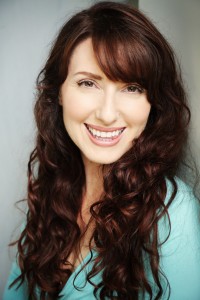
photo credit: CollegeDegrees360 via photopin cc
When my friend told me about her blog idea, I was really excited for her. “How’s it going?” I asked a few weeks later.
She proceeded to tell me that she’d gone home from the library with an armload full of books on website coding.
“Coding?! What on earth for?”
She’d read somewhere that she needed to learn how to code before she could blog. I was incredulous. “WHERE did you hear such a thing? You don’t need to know anything about coding to start a blog!”
She looked dubious.
And now, after spending a couple of days fiddling with html to adjust colours and font sizes in my own blog, I sheepishly admit to changing my answer from an emphatic, “No way!” to a less energetic, “Maaaaybe.”
But first . . .
Why writers don’t need to learn how to code:
1. You really can start blogging without knowing anything about html. If you begin by using Blogger or WordPress, ready-made themes, all nice and coded for you (free and paid), are available. Choose one and away you go. I use a StudioPress theme.
If you want to adjust a few things on Blogger, simply go into their advanced design page where they’ve made it super easy to amend your look by clicking on the colours, fonts, sizes and backgrounds you want. Their layout section gives you a decent sized amount of additional features, as well.
If you choose Wordpress, there are literally thousands of free plugins that will keep your coding dramas at bay while allowing you to have some very cool pieces of functionality.
Lots of sites have ready-made themes for different blogging platforms. Do a search. Chances are, you’ll find something you love.
2. If there’s a lot more functionality or a vastly different look you’re after, find a theme that is almost like what you have in mind, and then just hire someone to do the tweaks for you. Seriously. I don’t believe in coding a site from scratch. Find a theme you like and tweak THAT, if you must. That way you’re not reinventing the wheel by making someone start from the very beginning and paying for more work than you actually need.
If you’ve got around $100-200 to invest in your blog, then let someone who is an expert do what they do best so you can, too.
Why writers may need to learn some code:
1. If you really need something different and don’t have the money to spend on getting help or . . .
2. You don’t have the time or patience to wait for someone to make adjustments for you (especially if they’re just little tweaks), but you DO have the time and patience to learn how to do it yourself. I learned what I know (the very little I know) by searching “how do I (fill in the blank)” online. There are tutorials and videos that can help you with virtually anything.
You may discover that you actually love coding and you want to do it as a business on the side for other people. I know of several writers who also build websites, beautify blogs and provide graphic design services as a way to bring in extra money.
But please make sure that learning how to code is not some elaborate procrastinatory resistance technique to keep you from your writing!
Who me? Yeah, you’d be surprised how sneaky resistance can be.
Back when I was a proud DIY-er (Do it Yourself-er) and derived immense satisfaction from what I could achieve “all by myself,” I would’ve rolled up my sleeves and resigned myself to what “they” said (while secretly heaving a great sigh at yet another thing I had to learn before I could actually get down to writing).
Are you a web designer or a WRITER? Give your time to that.
Now, as I said, I am by no means an expert coder, but I’m grateful to have picked up a few skills along the way that have meant I don’t have to wait for someone to fix something simple for me (especially since I change my mind so often during my creative process!).
However, here are a few basics to get your feet wet:
- A “#” followed by a string of numbers or letters (#f0f0f0f or #eeeee for example) is a colour. Do a search for “html colours” and you can get lists of hundreds to choose from to plug into the elements you want to change. Here’s an html colour list.
- A number followed by “px” tells you the size of something. Like if a font is 12px, it’s 12 points in size.
- When you see something like this: width=”375″ height=”375″, you know that you can replace the numbers in accordance with the size you’d prefer (very handy with images and YouTube videos).
- Or here’s more html coding if you’re interested.
∗ My ultimate favourite html tip happens in the editor box where you compose your post. You will have two box choices. One is the “visual” or WYSIWYG (what you see is what you get) editor in WordPress (“compose” in Blogger) and the other is the “text” editor (“html” in Blogger). Create what you want in the visual editor (complete with photos and bold or italicized fonts) and then switch over to the text editor.
It will show you what you’ve done, but all wonderfully coded right there for you! You can copy and paste it into a widget box, or anywhere else you need it. Et voilà! No need to learn code. Yes, I know, it’s a beautiful thing. 😉
So how do you feel about learning code, or what have your experiences been? Has it been keeping you from writing? Leave a comment below!



